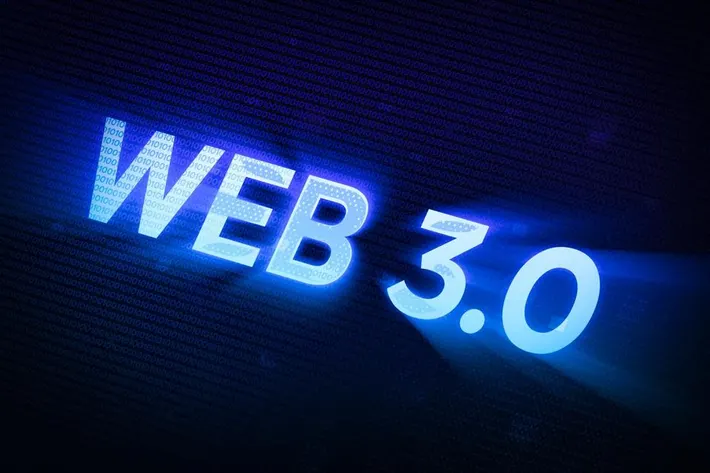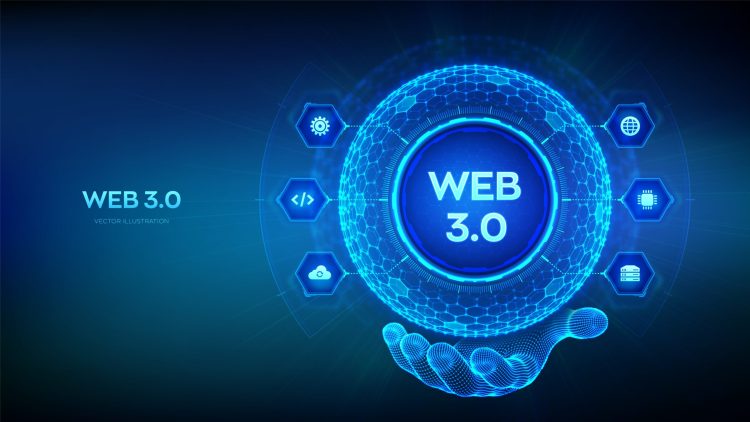Introduction
The internet has evolved drastically since its inception, with each phase marking a significant transformation in how we interact with information, services, and each other. From the early days of the web, known as Web 1.0, to the dynamic, user-generated content model of Web 2.0, the internet has consistently shaped and reshaped society. Now, as Web3—the third generation of the internet—gains traction, there is a growing debate about whether its rise could signal the end of traditional internet models, particularly the centralized platforms that dominate the Web 2.0 era.
Web3 is driven by blockchain technology, decentralization, and user empowerment, offering a radical shift from the centralized control that characterizes Web 2.0. But does this promise of decentralization truly spell the end of traditional internet models? In this article, we will explore the potential implications of Web3, its key features, and whether it is likely to replace or coexist with the current internet infrastructure.
Section 1: Understanding Web3 and Its Key Features
1.1 What is Web3?
Web3 refers to the next-generation internet powered by decentralized protocols and blockchain technology. The term “Web3” is used to describe an internet ecosystem where users have more control over their data, identities, and digital assets, as opposed to the centralized control seen in current platforms like Facebook, Google, and Amazon.
Some of the defining features of Web3 include:
- Decentralization: Web3 applications (also called dApps) are built on decentralized networks rather than centralized servers, which means they are not owned or controlled by a single entity.
- Blockchain Technology: Blockchain provides the underlying infrastructure for Web3, ensuring transparency, security, and immutability of data without relying on intermediaries.
- Tokenization and Cryptocurrencies: Web3 embraces the concept of digital assets, such as cryptocurrencies and non-fungible tokens (NFTs), allowing for new economic models and business incentives.
- User Ownership and Control: Users have more control over their data, identity, and interactions, reducing the reliance on large corporations for services and data storage.
1.2 The Evolution of the Web
To understand the potential of Web3, it’s helpful to look at the history of the internet:
- Web 1.0 (The Static Web): In its early days, the internet was mostly a collection of static websites that provided information. It was read-only, and the interaction between users and content was minimal.
- Web 2.0 (The Social Web): The arrival of Web 2.0 in the early 2000s introduced dynamic, user-generated content, social networks, and online services. Web 2.0 saw the dominance of large centralized companies (e.g., Google, Facebook, Amazon) that became gatekeepers of the internet, controlling vast amounts of data and content.
- Web3 (The Decentralized Web): Web3 promises to decentralize the power structures of the internet, allowing individuals to own their data and interact with digital assets directly, without intermediaries.
Section 2: The Core Concepts of Web3 That Challenge Traditional Models
2.1 Decentralized Networks vs. Centralized Platforms
One of the most significant ways Web3 diverges from traditional internet models is through decentralization. In Web 2.0, most applications are hosted on centralized servers controlled by major corporations. These companies control access to data, services, and even content, acting as gatekeepers that collect and monetize user information.
- Web3 offers decentralized alternatives where no single entity has control over the network. Blockchain networks, such as Ethereum, enable the creation of decentralized applications (dApps) that function on a peer-to-peer basis, without a central authority.
- Implication for Traditional Models: Traditional internet platforms, such as social media networks, search engines, and e-commerce platforms, rely on centralized servers and business models. If Web3 gains widespread adoption, it could disrupt these industries by providing more open, user-controlled alternatives.
2.2 User Ownership of Data
In the Web 2.0 era, user data is often collected, stored, and monetized by large corporations. Users give up control of their personal information in exchange for free services, which is a model that many have criticized for its lack of privacy and transparency.
- Web3 emphasizes user ownership of data. With decentralized storage solutions like IPFS (InterPlanetary File System) and protocols like Solid (created by Web inventor Tim Berners-Lee), individuals can own and control their personal data and choose when and with whom to share it.
- Implication for Traditional Models: The shift toward data ownership could undermine the business models of data-driven companies that profit from user data. If users gain control of their data, it may reduce the power of large corporations like Google and Facebook, who currently dominate the data-driven economy.
2.3 Smart Contracts and Tokenization
Web3 utilizes smart contracts, which are self-executing contracts with the terms written directly into code. These smart contracts can automate processes such as transactions, payments, and agreements without the need for intermediaries. Tokenization, the process of converting assets or rights into digital tokens, is also a key feature of Web3.
- Smart Contracts: In Web3, smart contracts can be used to facilitate and enforce agreements in a transparent and trustless manner. This eliminates the need for middlemen like lawyers, banks, or brokers.
- Tokenization: Digital tokens, including cryptocurrencies and NFTs, enable new forms of ownership and value exchange, allowing individuals to buy, sell, and trade assets in ways that were previously impossible.
- Implication for Traditional Models: The use of smart contracts and tokenization could disrupt industries such as banking, insurance, and real estate, where intermediaries play a crucial role in validating and facilitating transactions.
Section 3: The Potential Impact of Web3 on Traditional Internet Models
3.1 Disruption of Centralized Internet Giants
The rise of Web3 poses a direct challenge to the traditional internet model, which is dominated by centralized platforms like Facebook, Google, and Amazon. These companies have vast control over user data, content, and interactions, often leading to privacy concerns and accusations of monopolistic practices.
- Impact: Web3’s decentralization could reduce the influence of these internet giants by giving users more control over their data and interactions. Decentralized alternatives to platforms like Facebook (e.g., Mastodon), Google (e.g., Presearch), and Amazon (e.g., OpenBazaar) are already in development, offering decentralized alternatives to search, social networking, and e-commerce.
- Possible Scenario: If these decentralized platforms gain traction, the reliance on traditional internet companies may diminish, fundamentally altering the dynamics of the internet economy.
3.2 New Economic Models and Monetization Strategies
Web3 introduces innovative ways for users to engage in direct transactions and monetize their contributions. Through cryptocurrencies, NFTs, and DeFi (decentralized finance) platforms, individuals can participate in economic activities without intermediaries.
- Impact: Web3’s economic models could decentralize value creation by enabling creators, developers, and users to directly benefit from their contributions, reducing the dependency on traditional business models like advertising revenue or subscription fees.
- Possible Scenario: Content creators, for instance, could use NFTs to monetize their work directly, bypassing traditional platforms that typically take a cut of revenue.
3.3 Increased Privacy and Security
Web3’s emphasis on decentralization could also improve privacy and security compared to Web 2.0 models, where centralized entities are often targeted by hackers or misuse user data for profit. Blockchain’s transparency and cryptographic features provide an inherently more secure environment for user interactions.
- Impact: The adoption of Web3 could shift the focus from profit-driven data collection to privacy-focused models that prioritize user consent and control.
- Possible Scenario: Individuals might feel more empowered to participate in online activities and digital transactions, knowing that their privacy is better protected.

Section 4: Challenges to Web3 Adoption and the Future of Traditional Models
While Web3 offers numerous benefits, it faces several challenges that could slow its widespread adoption:
4.1 Scalability Issues
Current blockchain networks face scalability challenges, particularly when it comes to transaction speed and costs. Popular blockchains like Ethereum have been criticized for high gas fees and slow processing times during periods of high demand.
- Solution: Projects like Ethereum 2.0, Polkadot, and Solana are working on scaling blockchain technology to handle larger volumes of transactions more efficiently.
4.2 Regulatory and Legal Hurdles
The decentralized nature of Web3 raises questions about regulation and legal oversight. Governments are still figuring out how to regulate blockchain technology, cryptocurrencies, and decentralized platforms, particularly when it comes to issues like taxation, intellectual property, and consumer protection.
- Solution: Ongoing discussions between regulators, industry leaders, and policymakers will be crucial in shaping the legal framework for Web3.
4.3 User Adoption and Education
For Web3 to truly challenge traditional internet models, it must overcome significant barriers to user adoption. Many users are still unfamiliar with blockchain technology, cryptocurrencies, and decentralized applications.
- Solution: As the ecosystem matures, user-friendly platforms and education initiatives will be essential for driving adoption and making Web3 accessible to the masses.
Conclusion
The rise of Web3 represents a potential paradigm shift that challenges the centralized structures of the traditional internet. With its promises of decentralization, user data ownership, smart contracts, and new economic models, Web3 could significantly disrupt the status quo, empowering individuals and reducing the dominance of large corporations. However, challenges such as scalability, regulation, and user adoption must be addressed before Web3 can fully replace traditional models.
Rather than signaling the end of traditional internet models, Web3 may coexist alongside them, gradually transforming the landscape of the internet and creating new possibilities for decentralized applications. Ultimately, Web3 could lead to a more inclusive, secure, and user-driven internet, but its evolution will take time and require collaboration across industries, governments, and communities.
















































